Contents
- 1 Introduction: Why French Cuisine Captivates the World
- 2 The French Touch: Understanding the Essence of French Food Culture
- 3 Iconic Parisian Baguette: More Than Just Bread
- 4 Croissant and Pastries: Flaky Mornings in France
- 5 Café Culture: Enjoying Café au Lait & Fresh Pastries Like a Parisian
- 6 French Cheese Heaven: The Stunning World of Fromages
- 7 Escargots de Bourgogne: Savory Snails, A Gourmet Adventure
- 8 Crêpes and Galettes: Brittany’s Best Street Eats
- 9 The Magic of French Soups: Onion Soup and Bouillabaisse
- 10 Coq au Vin: Classic Burgundy on a Plate
- 11 Conclusion: Must-Try Foods in France for Every Traveler
- 12 Got questions about common food in France? Here are the answers travelers look for most
Introduction: Why French Cuisine Captivates the World
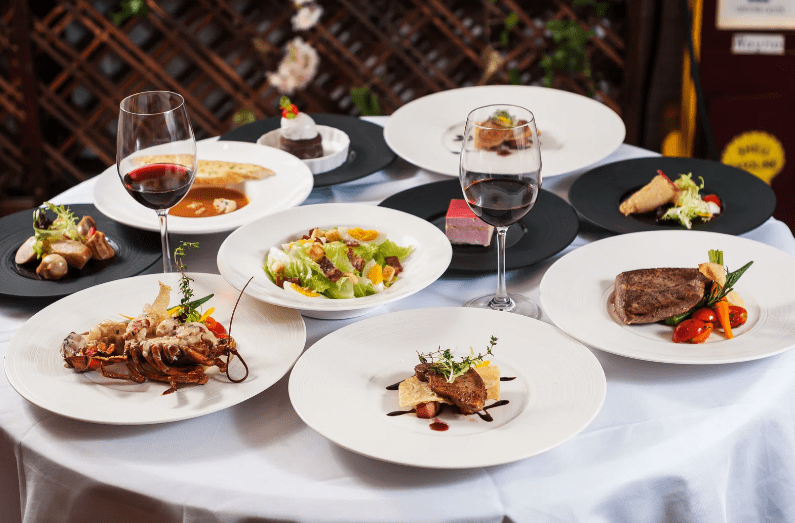
Common food in France is more than just daily meals—it’s an experience that draws millions of visitors and food lovers every year. French cuisine has a charm that’s hard to resist. From the bustling cafés of Paris to the cozy kitchens of Provence, French food tells a story shaped by region, tradition, and artistry.
People from across the globe crave French flavors, whether it’s to enjoy a fresh baguette at sunrise or to see a chef’s careful touch with creamy cheese. The way French meals bring together taste, tradition, and community is special. It’s not only about eating well—it’s about enjoying life together, one delicious forkful at a time.
Let’s explore the everyday dishes and classic specialties that make French cuisine so beloved and influential, not just in France, but all around the world.
The French Touch: Understanding the Essence of French Food Culture
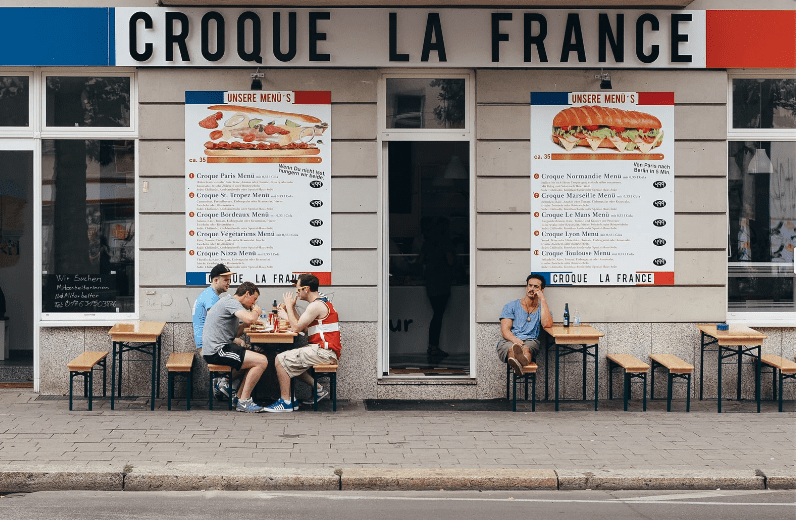
Walk through a French village or city, and you’ll see that food is everywhere. It’s on every corner—bakeries, cheese shops, bustling markets. But French food is more than just what’s on the plate. It’s a way of living.
Meals in France are about connection. Neighbors gather around the table for hours to share stories and savor each bite. Children often help with cooking, learning family recipes that have been passed down through generations. There’s a sense that food isn’t rushed. Lunch can last an entire afternoon, especially in the countryside. Ingredients are chosen with care, often from local farmers or markets. France takes pride in “terroir”—the unique taste that comes from the land, climate, and region where food grows.
Respect for tradition lives alongside new tastes. While most towns have their own signature dishes, French chefs are famous for creativity. Cooking is both an everyday pleasure and an art form. Michelin-starred restaurants stand beside simple brasseries and bustling crêpe stands. Each serves up its own kind of magic.
Food marks every moment—morning coffee, leisurely dinners, family Sundays, and huge national holidays like Bastille Day. This balance of respect, history, and sheer enjoyment gives French food its world-famous charm.
Iconic Parisian Baguette: More Than Just Bread

Nothing shouts “France” quite like the crusty baguette. Long, golden, with a crackling crust and a tender center, the baguette is a national treasure. It’s eaten at breakfast, lunch, supper—even as a snack. It didn’t always exist, though. The baguette, in its current form, became widely popular in the early twentieth century when laws changed, making it easier for bakers to work with softer dough and longer loaves.
The best baguettes have an aromatic, golden-brown outside and a honeycomb-like inside. There’s even a yearly contest in Paris—the “Grand Prix de la Baguette”—to find the city’s finest.
Where to Find the Best Boulangeries in Paris
Paris is home to thousands of bakeries, but a few names stand out. La Parisienne, winner of multiple baguette contests, is a top stop in the 7th arrondissement. Another favorite, Au Levain du Marais, is famous for its old-school methods and chewy crust. Poilâne, started in 1932, uses stone-ground flour and wood ovens for its breads.
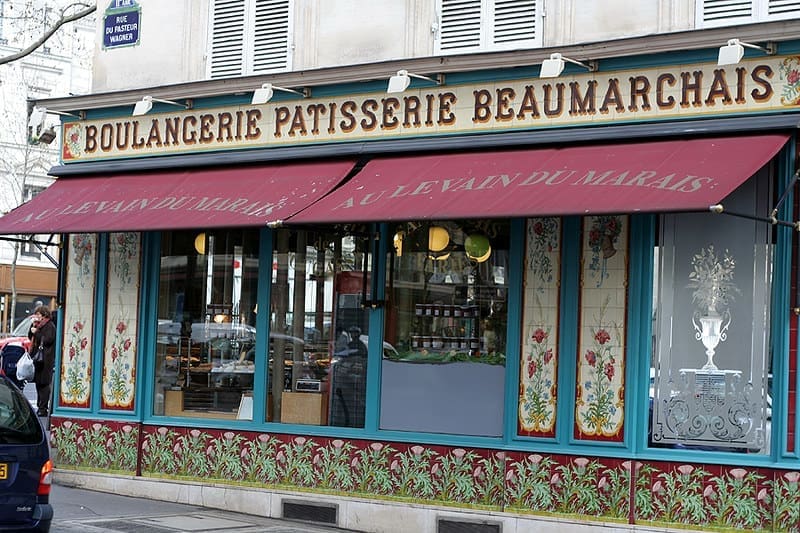
Many boulangeries proudly display blue, white, and red ribbons if they’ve won local or national awards. Locals often queue up early in the morning for warm loaves.
The Art of the Perfect Baguette Sandwich
A baguette isn’t just for tearing and munching. It also makes a perfect sandwich. In France, these are called “jambon-beurre,” meaning ham and butter. But the combinations seem endless—goat cheese with honey, smoked salmon with cream cheese, or roast chicken with crispy lettuce.
Making a baguette sandwich the French way is simple but exact. Only the freshest ingredients—often from the nearby market—go inside. It’s a quick lunch or snack, easy to eat on a park bench, at work, or by the Seine River.
Croissant and Pastries: Flaky Mornings in France
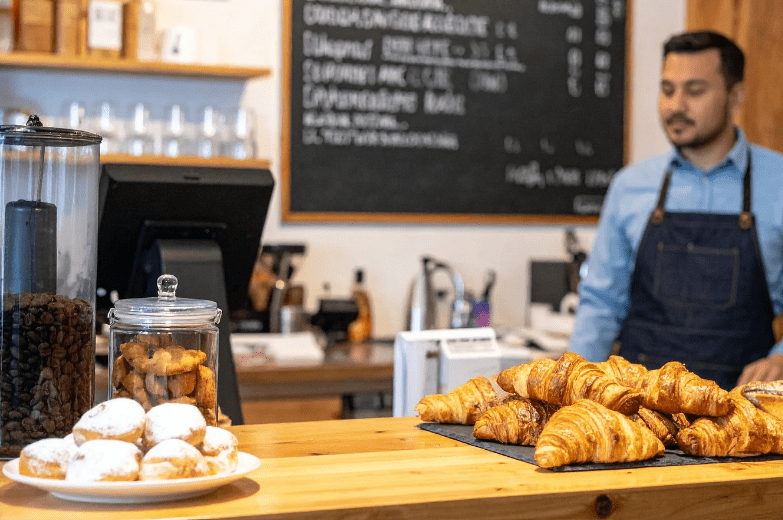
Morning in France smells like butter and sugar, thanks to the layers of croissants and pastries found in every bakery window. A real French croissant is light and crooked-shaped, with hundreds of layers that crunch and then melt when you bite into them.
These treats trace their roots to Austria, but became stars in France through the hands of great pâtissiers. Croissants are usually enjoyed with coffee, sometimes plain, and sometimes with jam or chocolate.
Pain au Chocolat: A Melt-in-Your-Mouth Experience
Pain au chocolat, known as “chocolatine” in the south, is a special breakfast roll. It looks like a square croissant, but inside it hides two sticks of dark chocolate. When warm, it’s gooey and rich inside, but crisp and flaky outside.
Schoolkids and adults alike hold these little pastries dear. Eating one on a sunny morning with a café au lait is a pure delight.
Meeting the Masters: Maison Patisserie and Renowned Bakers
Many famous patisseries in France are known worldwide. Ladurée and Pierre Hermé turn simple butter, flour, and sugar into sweet masterpieces. In Paris, Du Pain et des Idées has loyal fans for its creative twists and old-world recipes. Bakers like Dominique Ansel rose to fame thanks to inventions such as the Cronut—a hybrid croissant-doughnut.
Each pastry shop has its own secrets. These bakers wake before dawn each day to layer, roll, chill, and bake their golden goods. Many host classes for fans wanting to master French pastry skills.
Café Culture: Enjoying Café au Lait & Fresh Pastries Like a Parisian
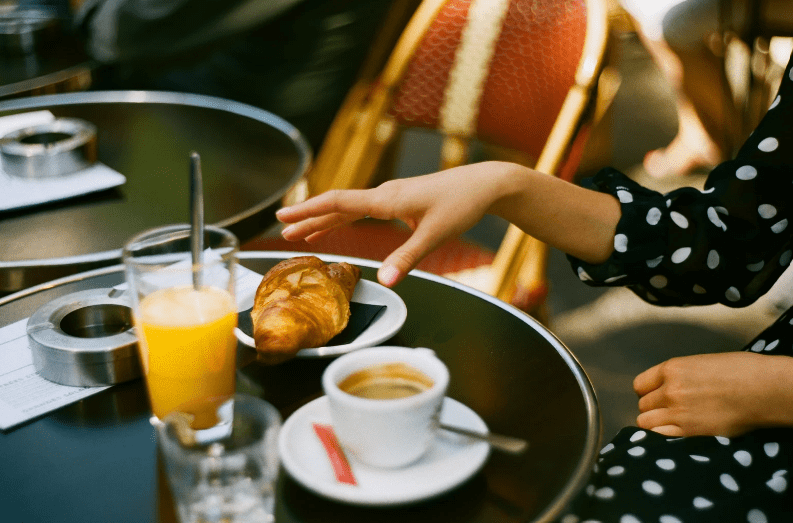
Coffee in France is about much more than a quick caffeine kick. The country’s iconic café culture invites people to sit, watch the city, and enjoy a ritual. French cafés are gathering places—busy in the mornings, buzzing during slow afternoons, lively at night.
The classic café au lait (coffee with steamed milk) is most often paired with a croissant or tartine (slices of baguette with butter and jam). In Paris, you’ll spot locals at little round tables, reading Le Monde, chatting, or just people-watching as they sip slowly.
This tradition is alive in famous spots like Café de Flore and Les Deux Magots in Saint-Germain-des-Prés. But every neighborhood has its favorite corner shop. Trying the café experience means ordering at the counter—or, if you’re feeling fancy, finding a seat outside to linger for an hour or two.
Waiters may not rush over, but that’s the point. Café life is slow, social, and easy. It’s a taste of French life—one sip at a time.
French Cheese Heaven: The Stunning World of Fromages
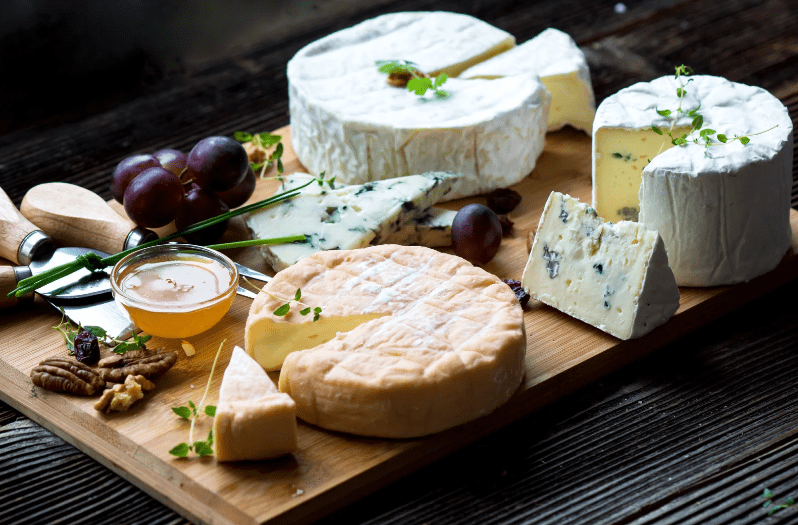
Cheese in France is almost a universe of its own. Every region brags about its own kinds—soft, stinky, mild, sharp, crumbly, or runny. Charles de Gaulle, a famous French leader, once joked about the challenge of ruling a country with “246 kinds of cheese.” There are, in fact, over a thousand! Cheese is everywhere—at the market, at home, in picnics, and at every formal meal.
Cheese is rarely just an appetizer. It often has its own course, coming right after the main dish and before dessert. Slices are served with bread, not crackers, and often with fruit, walnuts, or even a bit of honey.
Brie, Camembert, and Roquefort: Tasting the Classics
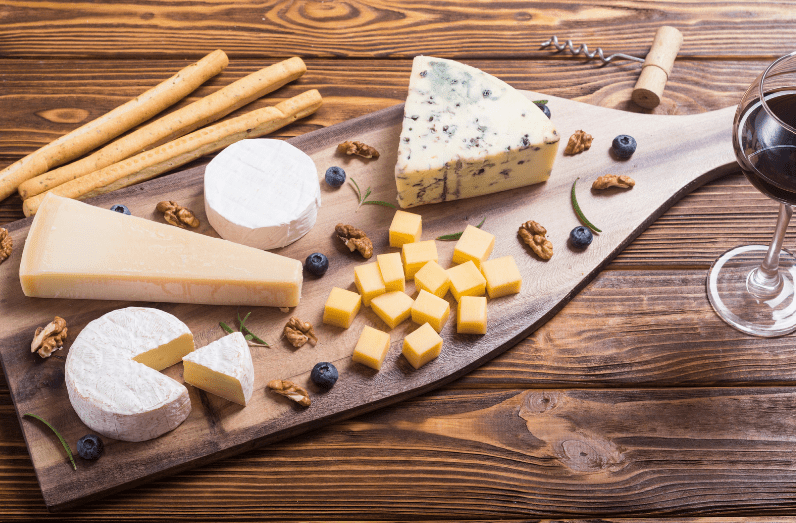
Three legendary cheeses rule the French table: Brie, Camembert, and Roquefort. Brie, with its creamy inside and edible white rind, comes from the Paris region. It’s soft, mild, and pairs well with fruit. Camembert is similar but stronger in both taste and smell; it hails from Normandy. Roquefort is France’s famous blue cheese—sharp, tangy, and veined with blue mold. It’s made from sheep’s milk in caves in the south.
Every cheese has its fans. Each one changes with the season, offering new flavors as the cows or sheep graze on different flowers and grass.
Artisanal Cheese Markets Across France
No trip to France is complete without a stroll through a cheese market. Places like Marché Richard Lenoir in Paris and Les Halles de Lyon are packed with incredible options. Vendors will urge you to sample slices, sharing their knowledge on flavor, texture, and age.
Many small farms—like Fromagerie Quatrehomme in Paris or La Borie d’Imbert in the southwest—let you see cheese being made. Some host cheese festivals, like Salon du Fromage, drawing producers from every corner of the country. These markets keep traditions alive and celebrate local flavor, offering a cheese journey that’s as rich in history as it is in taste.
Escargots de Bourgogne: Savory Snails, A Gourmet Adventure
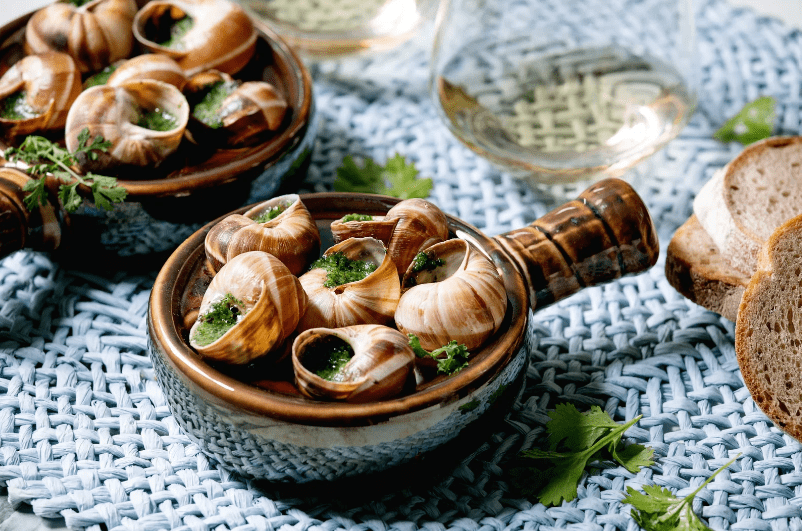
Escargots—yes, snails—are a fancy treat, especially from Burgundy. If you’ve never tried them, it might sound strange. But once prepared, they’re tender and full of flavor, snuggled in a hot shell with garlic-parsley butter.
This dish dates back hundreds of years. Today, it shows up at family tables on holidays or in top-rated Parisian restaurants like L’Escargot Montorgueil.
Traditional Garlic-Parsley Butter Preparation
The “secret sauce” for escargots is a buttery blend of crushed garlic, fresh parsley, and sometimes shallots or even a squirt of lemon. Snails are washed, simmered, and then tucked into their shells with this vivid green butter.
Bakers make special tools—tiny tongs and two-pronged forks—to help eat every last bite. The best part? Dipping chunks of baguette in the leftover butter.
Where to Try Authentic Escargots in Burgundy
Burgundy, or Bourgogne, is the ultimate place for escargots. In towns like Dijon and Beaune, classic bistros serve snails as both finger food and high cuisine. Maison Millière in Dijon gives visitors the full Burgundy experience, with its stone walls and ancient beams.
In Paris, look for Maison de l’Escargot in the 14th arrondissement or try them at Michelin-starred places if you want something grand. Guides often recommend wine pairings—usually a crisp Burgundy white—to round out the adventure.
Crêpes and Galettes: Brittany’s Best Street Eats
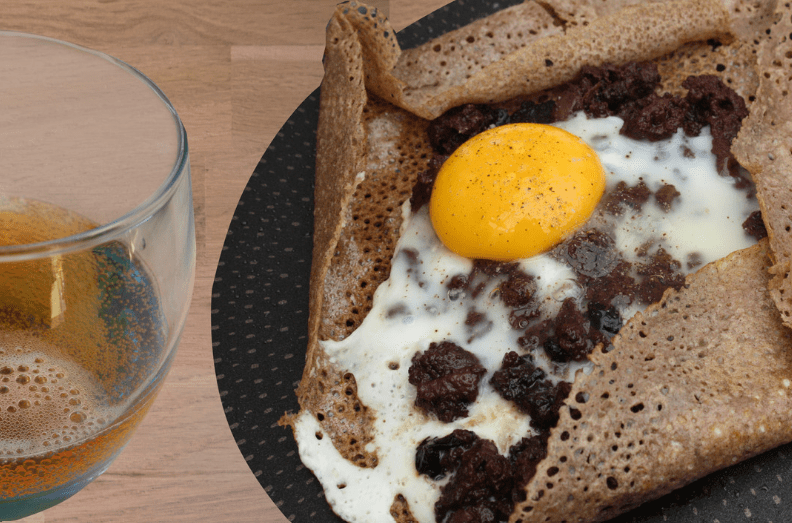
Brittany, in northwest France, is famous for two thin pancakes: crêpes and galettes. Stands and cafés in Paris, Brittany, and beyond cook them up fresh, rolled or folded with all sorts of fillings.
Crêpes are soft and tender, made with white wheat flour and eaten sweet—think Nutella, bananas, or sugar and lemon. Galettes, on the other hand, use buckwheat flour and have a toasty, earthy taste, perfect for savory fillings like ham, eggs, mushrooms, and cheese.
Sweet vs. Savory: What’s the Difference?
This is a big debate in French food! Sweet crêpes are usually a dessert or a midday snack. They’re thin, buttery, and folded, often dusted with powdered sugar. Savory galettes use darker buckwheat flour and are chewier, filled with hearty meats, veggies, or melty cheese—sometimes all three.
Both are cooked on a hot circular griddle called a “bilig,” giving them a slightly crisp edge. It’s quick, tasty, and portable—France’s answer to the taco or burrito!
Famous Crêperies in Montparnasse
Montparnasse, once a favorite Paris hangout for artists like Picasso, is now known for crêperies. Places like La Crêperie de Josselin and La Petite Bretonne sell dozens of galettes and sweet crêpes, plus traditional Breton cider in clay cups.
Locals line up outside, especially at weekends, eager for a simple meal that’s fast, fresh, and full of flavor.
The Magic of French Soups: Onion Soup and Bouillabaisse
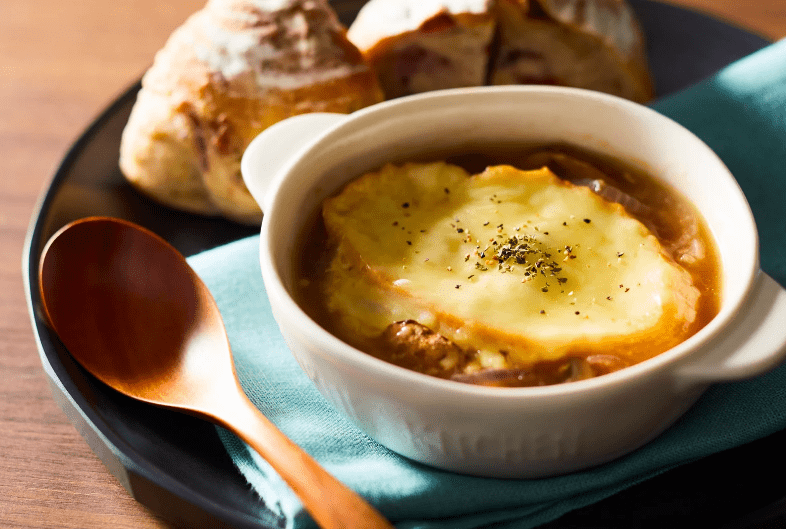
Soup in France is comfort in a bowl. It can be rustic or refined, simple or spectacular. Walk into a brasserie on a cool evening, and you’re likely to find French onion soup—a bubbling pot of rich, dark broth, topped with toasted bread and melted cheese.
In southern France, the go-to comfort dish is bouillabaisse, a seafood stew packed with the flavors of the Mediterranean.
Parisian Onion Soup: Comfort in a Bowl
French onion soup, or “soupe à l’oignon,” is a Paris classic. It starts with onions cooked low and slow until caramelized, then simmered with beef or chicken stock and a splash of wine. Thick slices of bread are floated on top, smothered in Gruyère cheese, and broiled until golden.
The soup is piping hot, gooey, and deeply savory. It first became popular with market workers who needed something filling and warming after a long night.
Provençal Bouillabaisse: Savoring Marseille’s Seafood Specialty
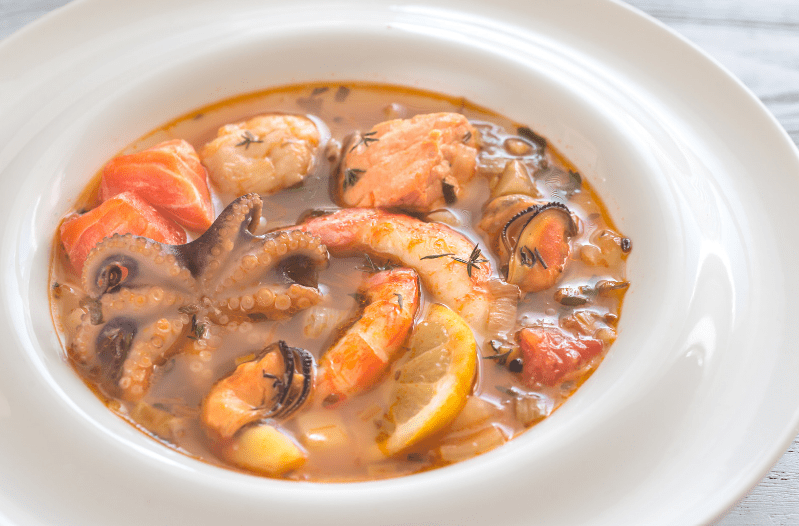
Bouillabaisse comes from Marseille, the sunny port city in Provence. This stew is made with several types of fish—whatever’s fresh that day—plus tomatoes, saffron, garlic, and herbs. It’s served with “rouille,” a spicy garlic sauce, and thick slices of toasted bread.
Locals and travelers alike gather at places like Chez Fonfon for authentic bouillabaisse. It’s not just a meal; it’s a feast that brings everyone together around the table.
Coq au Vin: Classic Burgundy on a Plate
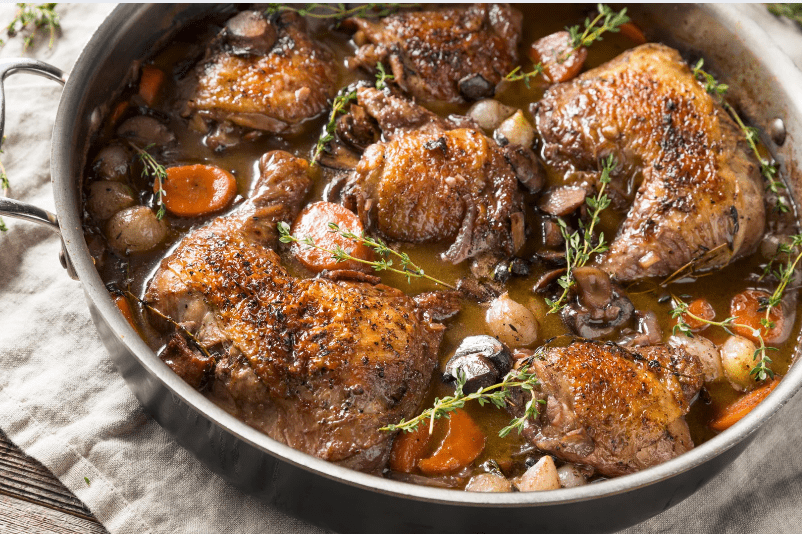
One of the greatest comfort foods in France is coq au vin—chicken slowly cooked with wine, bacon, mushrooms, and onions. It began as a way to tenderize tough old roosters, but now, tender chicken is used. The result is a dish that tastes rich, hearty, and full of flavor.
It’s a staple across France, but especially beloved in Burgundy, where the red wine adds depth and aroma to the stew.
How French Wine Elevates Chicken Dishes
The magic of coq au vin is the wine. Burgundy red, like Pinot Noir or Gamay, gives the stew a deep color and complex taste. Wine breaks down the meat, making it soft and juicy, while also blending with onions, herbs, and mushrooms to create a sauce you’ll want to mop up with bread.
French cooking uses wine in more than just stews. Even creamy chicken fricassée or roast duck relies on a splash of the local vintage.
Esteemed Chefs and Their Signature Coq au Vin
Many famous chefs, like Paul Bocuse and Alain Ducasse, have their own versions of coq au vin. Some add pearl onions or extra bacon; others use white wine for a lighter touch. In Lyon, called the “stomach of France,” bistros treat coq au vin as a showpiece—served at big family Sunday lunches or special occasions.
Food lovers travel to Burgundy’s auberges (country inns) to sample traditional versions, cooked just like they were a hundred years ago.
Conclusion: Must-Try Foods in France for Every Traveler
France offers a culinary journey like no other, from flaky croissants and creamy cheeses to savory dishes like coq au vin and ratatouille. Each region brings its own specialties, letting travelers taste local history in every bite. Exploring farmers’ markets, bakeries, and small bistros ensures an authentic experience.
To make the most of your trip, plan by identifying must-try dishes in each region, be open to tasting new flavors, and savor the unique combinations France has to offer. Experiencing French food is not just about eating—it’s about discovering the culture, traditions, and stories behind every meal.
Got questions about common food in France? Here are the answers travelers look for most
1. What is the most common food in France?
The most common food in France is bread, especially the baguette. It’s eaten daily with meals. Cheese, butter, and wine also pair well with it.
2. Why is bread a common food in France?
Bread is a staple in French culture. The baguette is affordable, fresh, and sold at every bakery. French people eat it with breakfast, lunch, and dinner.
3. What cheese is considered a common food in France?
Camembert and Brie are common cheeses in France. They’re soft, creamy, and enjoyed with bread. French cheese is served at family meals and restaurants alike.
4. Is wine considered a common food in France?
Wine is not food, but it’s part of daily French dining. Red and white wines pair with cheese, meat, and fish.
5. What meats are common food in France?
Pork, chicken, and beef are common meats in France. Sausages, roasts, and stews often feature them. Duck is also popular in many regions.
6. Why is cheese a common food in France?
France has over 1,000 types of cheese. Cheese is eaten daily with bread or wine. It’s central to French meals and traditions.
7. What desserts are common food in France?
Crème brûlée, éclairs, and macarons are common desserts in France. Pastries like croissants and pain au chocolat are also daily favorites.
8. Is butter a common food in France?
Yes, butter is common in France. It’s used for cooking, baking, and spreading on bread. French butter is rich and flavorful.
9. What soups are common food in France?
French onion soup is very common. It’s made with caramelized onions, broth, and melted cheese on bread. It’s a national classic.
10. What seafood is common food in France?
Oysters, mussels, and cod are common seafood in France. Coastal regions serve them fresh with bread, butter, and wine.
11. Are pastries a common food in France?
Yes, pastries are common in France. Croissants, tarts, and éclairs are eaten for breakfast or dessert. Bakeries sell them everywhere.
12. Is duck a common food in France?
Yes, duck is common in France, especially dishes like confit de canard. It’s rich, flavorful, and popular in French cuisine.
13. What vegetables are common food in France?
Potatoes, carrots, leeks, and onions are common vegetables in France. They appear in soups, stews, and side dishes.
14. Is escargot a common food in France?
Escargot, or snails, are a common delicacy in France. They’re often cooked with garlic butter and herbs.
15. What fruits are common food in France?
Apples, grapes, cherries, and strawberries are common fruits in France. They’re used in tarts, jams, and fresh desserts.
16. What breakfast foods are common in France?
Common breakfast foods in France include croissants, baguettes with jam, and café au lait. It’s usually light and simple.
17. Is cheese eaten daily as a common food in France?
Yes, cheese is eaten daily. It’s served with bread, wine, or as a course after meals.
18. What is the most common street food in France?
Crêpes are the most common street food in France. Sweet or savory, they’re sold at stalls and markets everywhere.
19. Are stews a common food in France?
Yes, stews like boeuf bourguignon and cassoulet are common. They use beef, beans, wine, and herbs for flavor.
20. Why is the baguette the most common food in France?
The baguette is cheap, fresh, and part of French culture. Every meal feels incomplete without it.



Thank you for your sharing. I am worried that I lack creative ideas. It is your article that makes me full of hope. Thank you. But, I have a question, can you help me?